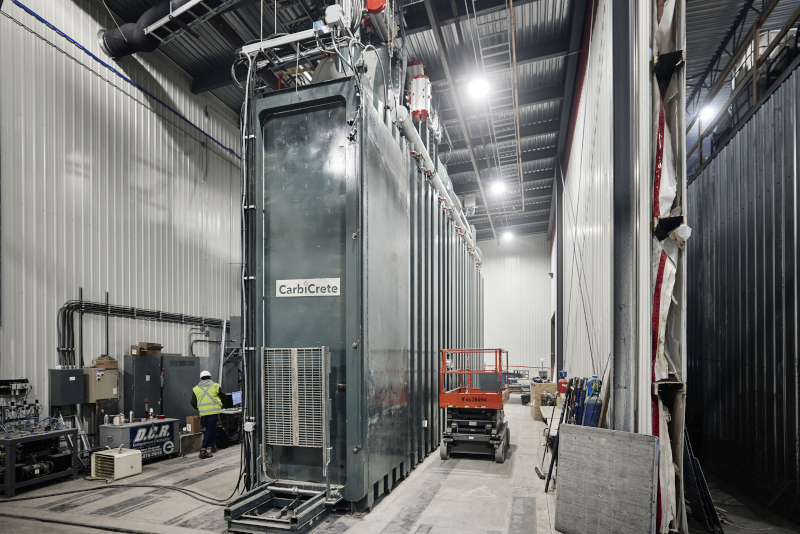The Process
The steps in CarbiCrete’s process are identical to those of conventional concrete making, with a few key differences.
With cement-based concrete, the first step involves mixing cement with aggregate and water. With CarbiCrete, cement is completely replaced with otherwise landfilled steel slag, which is mixed with the other materials using standard equipment.
The mix is then formed into masonry products using conventional machinery.
In order to cure the concrete, it must be placed into a specialized curing chamber into which CO2 is injected. Within 24 hours, the concrete has reached full-strength.

CO2 Curing
Our patented curing process involves the injection of CO2 into a curing chamber where it reacts with the steel slag within the fresh concrete. During the carbonation process, the biogenic CO2 from ethanol fermentation is permanently captured and converted into stable calcium carbonates, filling the voids of the matrix to form a dense structure and giving the concrete its strength.
Learn more about the chemical reaction at the root of our process.
Concrete Properties
When compared with cement-based masonry products, CarbiCrete-enabled products exhibit equivalent or better mechanical and durability properties. They have the same water absorption properties, and can exhibit higher compressive strength and better freeze/thaw resistance. CarbiCrete CMUs meet or exceed ASTM C90 performance requirements.



